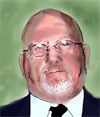Justin,
Unfortunately the way “Smart Grid” is being presented by the news media is causing more questions and misinformation than answers.
The so called remote control function of a “Smart Grid” in fact is a General Electric function and interface with their GE products. The remote control function has been here for many years with the BSR-X10 remoter control household system, Sears, Radio Shack, Ace Hardware, Home Depot, Lowes, Wal-Mart has interfaces, Netgrear LAN products and even Microsoft utilizes the remote control function across the grid with their operating systems. Wide spread remote control has been around since the 1960s and its nothing new.
The rush to be the first or create a first in nation foothold in so called green jobs and technologies industries is putting local state-wide power grids at risk because the local grids were not designed to accommodate fluctuating alternate power resources. When a state-wide local grid trips out to protect its self it puts stress on the regional grid system.
The cascading grid shut down to protect its self caused the Great Northeast Black Out of 1965 which happened November 9, 1965 affecting Ontario, Canada and states; Connecticut, Massachusetts, New Hampshire, Rhode Island, Vermont, New York, and New Jersey. Around 25 million people and 80,000 square miles were left without electricity for up to 12 hours. This was followed by the Northeast blackout of 2003 on August 14, 2003 which covered the Northeastern and Midwestern United States and Ontario, Canada affecting an estimated 10 million people in Ontario and 45 million people in eight U.S. states
In reality, the electrical grid infrastructure for the United States of America is out dated and needs to be updated. We as individual users of the grid have been going to the well and increasing our drinking abilities without upgrading the methodology of supply.
With new technologies (so called green power or alternate energy) becoming vastly popular (wind power and solar photovoltaic system) , interfacing the systems and power farms into the existing power grid is causing problems because inconsistent power levels due to natural changes in sun or wind.
The main purpose of a “Smart Grid” is to maintain a constant voltage (115 Volts USA) and frequency (60 Hertz USA) regardless of the load demand in relationship to power supply.
The National Grid is made up of the contiguous 48 states and parts of Canada and Mexico and are known as the Western Interconnection, the Eastern Interconnection, and the Electric Reliability Council of Texas (ERCOT) Interconnection. The three grids operate independently for the most part but are connected in a few places by direct-current lines. All United States power utilities, except those in the states of Alaska and Hawaii, are connected to other power utilities through the national power grid. Dispatch centers maintain and control the flow of electricity over the grid, supplying electricity to meet the demand.
Hawaii is fortunate in that it has standalone grid systems. Because Hawaii has an abundance of natural renewable energy (green power) options and resources in 2007 President George Bush announced plans for a multibillion-dollar initiative to make Hawaii the first low-carbon state in the US. The initiative, which is being backed by the Federal Department of Energy and Hawaii National Energy Laboratory aims to make Hawaii a model low-carbon economy that can then be replicated across the rest of the US. State of Hawaii is on track to reduce total state-wide imported oil dependence 70% by year 2030.
Hawaiian Electric Company (HECO) has been testing wind turbines and grid interfacing along with NASA on various islands since 1980s. HECO owns a US patent for “shock absorber” to interface wind farms to the grid. So far 40% alternate energy has been obtained on one island and another island is moving towards 100% alternate energy.
General Electric is currently testing “Smart Grid” on the island of Maui interfacing a Maui wind farm to the grid and providing alternate energy to the specified community from the wind farm smoothing the alternate energy that varies its power output with constant varying wind speeds storing it and providing alternate energy when the wind is not at speed. Lessons learned will provide guidance to the rest of USA on how to interface such a wind farm to the grid.
There are over 100 alternate energy projects (small/large) that are in test and/or moving to commercial production in the 50th state. Just about all known and under development alternate energy systems are being utilized. Some company products make sense and some don’t but at least the America ingenuity is allowed a chance to prove its self. They all must interface with a grid at some point in time without causing havoc! Hence the “Smart Grid”.




 About Community Crier
About Community Crier

 About Engaged Citizen
About Engaged Citizen





This is worth getting worked up about. The things you speculate about are the intention of the smart grid. The intent is to have remote control over our personal energy consumption. It is not crazy to consider this when this type of technology is already in use in some places such as military housing and public housing. The arguement for these places is that the landlord (the government) is paying the utility bill and therefore has the right to tell you that you must keep the temperature bewteen 62 and 68 degrees in the winter for example.
Now they want us to all participate in the smart grid to "do our part". It has been proposed in California that allowing the utlity to remotely control consumers energy usage during peak demand would reduce that demand and result in fewer brown outs.
It is my opinion that the government and utilities have no business telling me how much energy I can use and certainly have no right to remotely control my usage in my private property. What is really scary is the fact the the government now owns up to 40% of the housing in this Country thanks to Freddie and Fannie.
Posted by: Tina at October 28, 2009 10:43 PMJustin,
Unfortunately the way “Smart Grid” is being presented by the news media is causing more questions and misinformation than answers.
The so called remote control function of a “Smart Grid” in fact is a General Electric function and interface with their GE products. The remote control function has been here for many years with the BSR-X10 remoter control household system, Sears, Radio Shack, Ace Hardware, Home Depot, Lowes, Wal-Mart has interfaces, Netgrear LAN products and even Microsoft utilizes the remote control function across the grid with their operating systems. Wide spread remote control has been around since the 1960s and its nothing new.
The rush to be the first or create a first in nation foothold in so called green jobs and technologies industries is putting local state-wide power grids at risk because the local grids were not designed to accommodate fluctuating alternate power resources. When a state-wide local grid trips out to protect its self it puts stress on the regional grid system.
The cascading grid shut down to protect its self caused the Great Northeast Black Out of 1965 which happened November 9, 1965 affecting Ontario, Canada and states; Connecticut, Massachusetts, New Hampshire, Rhode Island, Vermont, New York, and New Jersey. Around 25 million people and 80,000 square miles were left without electricity for up to 12 hours. This was followed by the Northeast blackout of 2003 on August 14, 2003 which covered the Northeastern and Midwestern United States and Ontario, Canada affecting an estimated 10 million people in Ontario and 45 million people in eight U.S. states
In reality, the electrical grid infrastructure for the United States of America is out dated and needs to be updated. We as individual users of the grid have been going to the well and increasing our drinking abilities without upgrading the methodology of supply.
With new technologies (so called green power or alternate energy) becoming vastly popular (wind power and solar photovoltaic system) , interfacing the systems and power farms into the existing power grid is causing problems because inconsistent power levels due to natural changes in sun or wind.
The main purpose of a “Smart Grid” is to maintain a constant voltage (115 Volts USA) and frequency (60 Hertz USA) regardless of the load demand in relationship to power supply.
The National Grid is made up of the contiguous 48 states and parts of Canada and Mexico and are known as the Western Interconnection, the Eastern Interconnection, and the Electric Reliability Council of Texas (ERCOT) Interconnection. The three grids operate independently for the most part but are connected in a few places by direct-current lines. All United States power utilities, except those in the states of Alaska and Hawaii, are connected to other power utilities through the national power grid. Dispatch centers maintain and control the flow of electricity over the grid, supplying electricity to meet the demand.
Hawaii is fortunate in that it has standalone grid systems. Because Hawaii has an abundance of natural renewable energy (green power) options and resources in 2007 President George Bush announced plans for a multibillion-dollar initiative to make Hawaii the first low-carbon state in the US. The initiative, which is being backed by the Federal Department of Energy and Hawaii National Energy Laboratory aims to make Hawaii a model low-carbon economy that can then be replicated across the rest of the US. State of Hawaii is on track to reduce total state-wide imported oil dependence 70% by year 2030.
Hawaiian Electric Company (HECO) has been testing wind turbines and grid interfacing along with NASA on various islands since 1980s. HECO owns a US patent for “shock absorber” to interface wind farms to the grid. So far 40% alternate energy has been obtained on one island and another island is moving towards 100% alternate energy.
General Electric is currently testing “Smart Grid” on the island of Maui interfacing a Maui wind farm to the grid and providing alternate energy to the specified community from the wind farm smoothing the alternate energy that varies its power output with constant varying wind speeds storing it and providing alternate energy when the wind is not at speed. Lessons learned will provide guidance to the rest of USA on how to interface such a wind farm to the grid.
There are over 100 alternate energy projects (small/large) that are in test and/or moving to commercial production in the 50th state. Just about all known and under development alternate energy systems are being utilized. Some company products make sense and some don’t but at least the America ingenuity is allowed a chance to prove its self. They all must interface with a grid at some point in time without causing havoc! Hence the “Smart Grid”.
Posted by: Ken at October 28, 2009 11:26 PM